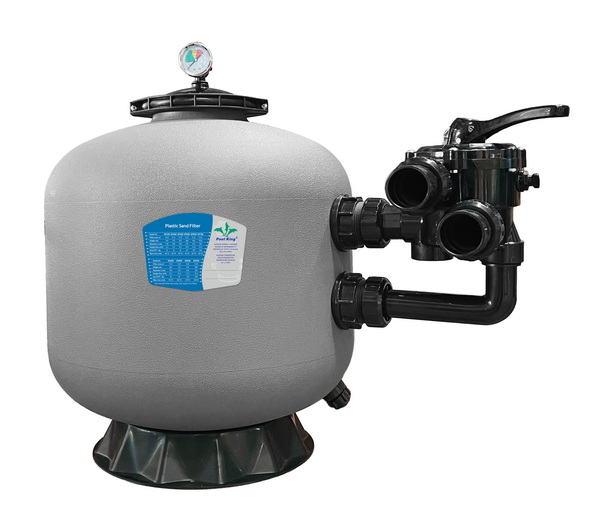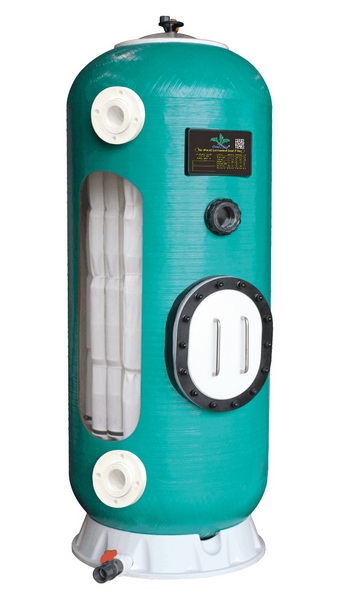Views: 222 Author: Tina Publish Time: 2025-10-04 Origin: Site








Content Menu
● Types of Hayward Pool Filters
● Technical Overview: How Sand Filtration Works
● Why Sand Quantity & Type Matter
● Model-by-Model Sand Requirements Table
● Step-by-Step Installation (with Videos)
● Routine Maintenance Strategies
● Troubleshooting & Problem Solving
● Water Chemistry & Compliance
● FAQ
>> 1. What kind of sand is suitable for Hayward filters?
>> 2. How often should the sand be changed?
>> 3. What do I do if sand is leaking into the pool?
>> 4. Does the sand quantity vary with pool size?
>> 5. Can your factory provide custom/OEM filtration solutions?
Choosing the correct sand quantity for your Hayward pool filter is essential for maintaining pristine water quality and ensuring system longevity for both residential and commercial applications. This guide presents in-depth insights into Hayward sand filter specifications, technical operation, installation, troubleshooting, maintenance, and the advantages of OEM manufacturing for industrial buyers. With charts, visual aids, and references to authoritative manuals, this article provides a complete solution for operators, distributors, and brand owners seeking high-quality pool filtration results.[1][11][12][13]

Hayward's pool filter lineup includes high-rate sand filters, cartridge filters, and DE filters, each offering unique advantages. Sand filters—particularly the ProSeries and VL Series systems—are popular in commercial and OEM settings for their balance of robust filtration and simple maintenance.[7][13]
| Filter Type | Filtration Fineness | Maintenance Needs | Common Uses |
|---|---|---|---|
| Sand Filter | 20–40 micronshayward | Low | Residences, hotels, OEM pools |
| Cartridge Filter | 10–15 micronshayward | Moderate | Spas, compact pools |
| DE Filter | 2–5 micronshayward+1 | High | Competition, luxury pools |
Hayward sand filters operate on a simple yet highly effective mechanism. Water enters the tank through a multiport valve, spreading evenly over the sand bed. As water percolates down, dirt and organic particles are trapped in the sand. Clean water returns to the pool through an underdrain system, ensuring continuous filtration. When pressure builds up from trapped debris, a backwash reverses flow to flush waste out through the drain, restoring performance.[3][5][8]
Key Specs:
- Filtration sand: #20 silica sand, 0.45–0.55 mm grain size[8][3]
- Tank: Corrosion-proof polymer, certified for pressure up to 30 PSI[8]
- Design flow rates: Up to ~45 GPM for above-ground, ~80+ GPM for larger models[5][7]
Precise sand loading is fundamental to effective filtration. Underfilling leads to poor water clarity; overfilling raises internal pressure and risks damage. Only #20 silica sand (or certified alternatives) should be used, as improper media (play sand, construction sand) may clog or abrade filter internals.[11][12][3][8]
Benefits of OEM-grade sand:
- Maintains rated filtration microns
- Prevents channeling, caking, and excessive wear
- Meets warranty and compliance for industrial buyers
How much sand to use is specified by Hayward and varies with each filter model. Below is an authoritative chart for current Hayward sand filter systems. Always verify with the printed manual for your exact tank:
| Hayward Model | Sand Required (lbs) | Tank Size (inches) | Flow Rate (GPM) |
|---|---|---|---|
| S140 | 50 | 14 | 35 |
| S160, S166, S170, S165 | 100–150 | 16–17 | 35–40 |
| S180T, S180T90 | 150 | 18 | 35 |
| S190 | 175 | 19 | 40 |
| S200/S200 Series | 200 | 20 | 44 |
| S210, S210T | 200 | 21 | 44 |
| S220 | 250 | 22 | 52 |
| S230 | 250 | 23 | 52 |
| S244T, S240, S245 | 300 | 24 | 62 |
| S270, S270T | 350 | 27 | 74 |
| S310, S311 Plus | 500 | 31 | ~80+ |
| S360 Plus | 700 | 36 | High-flow |
| VL Series (VL40T, etc) | 42–50 | 13 | 30 |
Proper installation ensures best results and maximizes filter lifespan. Hayward sand filters are engineered for simple, accurate setup by technicians or buyers.
1. Place tank on flat surface, connect to pump suction line.
2. Assemble lateral and standpipe hardware inside tank.
3. Fill tank halfway with water (protects laterals during sand loading).
4. Add required sand gradually, ensuring standpipe is covered.[15][8]
5. Install valve assembly, sealing with manufacturer gaskets.
6. Attach return and waste hoses, tighten all unions.
7. Conduct an initial backwash and rinse cycle before use to remove fine sand and shipping debris.

Consistent maintenance is key for pool safety and user satisfaction. OEM guides recommend:
- Backwashing: When pressure rises 8–10 PSI over baseline (typically every 1–2 weeks for commercial pools), perform a backwash followed by rinse.[16][5]
- Pressure Checks: Use internal gauge; rise signals sand bed clogging or debris blockages.
- Sand Replacement: Every 3–5 years (industrial/commercial pools may require annual replacement due to usage).[12][16]
- Visual Inspection: Annual teardown to check laterals, gaskets, tank for cracks.
- Winterizing: Drain tank, remove valve, store indoors if possible.
Efficient troubleshooting supports uninterrupted pool operations and reduces downtime costs for B2B buyers.
| Issue | Symptoms | Solution |
|---|---|---|
| Low Water Flow | Slow circulation | Check baskets, backwash, inspect lineshayward |
| Short Filter Cycles | Frequent tank clogs | Verify correct sand level, inspect for algae, check pump baskethayward+1 |
| Cloudy Pool Water | Poor clarity | Adjust pH/chlorine, backwash, replace sand if agedhayward |
| Sand in Pool | Grit on bottom | Replace broken laterals or standpipe; check assemblyintheswim |
| Leaking Valve | Wet around collar | Re-seat O-rings, tighten clamps, lubricate rubber gasketintheswim |
| Pressure Too High/Low | Gauge variations | Clean sand bed, verify correct media weight, flush lineshayward |
Our factory specializes in Hayward-compatible sand filter production using intelligent automated lines and strict QC. OEM and private label services empower international distributors, hotels, and pool brands with:
- Logo branding, custom color tanks
- Technical documentation matched to client market
- Bulk ordering for B2B, logistics management, export compliance
- Ongoing support for filter sizing, local sand sourcing, product upgrades
All products are tested for international standards, ensuring reliability and legal compliance for importers and project managers.
Hayward products are supported by extensive compliance documentation, covering parameters for optimized filtration performance:
- pH: 7.2–7.6
- Total Alkalinity: 80–120 ppm
- Calcium Hardness: 200–400 ppm
- Stabilized Chlorine: 1.0–3.0 ppm
- Cyanuric Acid: 60–80 ppm
Maintaining these values not only ensures effective operation but also meets safety protocols required in hospitality, leisure, and industrial installations.[3][5]
Accurately determining and using the right amount of sand in a Hayward pool filter is essential to achieve crystal-clear water, maintain rigorous hygiene standards, and ensure filter longevity. By following manufacturer tables for sand loading, adhering to professional maintenance routines, and leveraging OEM solutions for branding and technical customization, operators and distributors guarantee the best pool experience whether for private homes or the global hospitality industry. Always refer to the latest technical manuals and compliance guides for optimal results and system safety.[13][7][11][12][5][8][15][16][3]

Only use #20 silica sand with a grain size of 0.45–0.55 mm for all Hayward models. Specialty filter media like Zeolite are allowed if specified by the OEM.[11][8][3]
Replace filter sand every 3–5 years under normal use, or annually for commercial/industrial pools with intensive usage.[12][16]
Sand in the water usually means cracked or broken laterals or standpipe damage. Replacement parts are available and recommended for OEM-level upkeep.[17]
Yes, each filter model requires a specific weight of sand based on tank size. Consult the official model chart above or your Hayward documentation.[7][8][3]
Absolutely. We supply Hayward-compatible sand filters with private labeling, tailored documentation, and full B2B support for international brands, distributors, and project managers.
[1](https://hayward.com/products/pool-filters.html)
[2](https://hayward.com/quick-reference-troubleshooting-guides)
[3](https://hayward.com/media/akeneo_connector/asset_files/I/S/IS200_RevC_bb42.pdf)
[4](https://hayward.com/guide-manuals)
[5](https://hayward.com/media/akeneo_connector/asset_files/I/S/IS210TS_RevA_61ed.pdf)
[6](https://hayward.com/progrid-de-filter-60-sq-ft-de6020.html)
[7](https://hayward.com/vl-seriestm-top-mount-sand-filters-systems-vl40t32.html)
[8](https://poolsandcues.com/wp-content/uploads/2023/08/Hayward-S180T-Above-Ground-Sand-Filter.pdf)
[9](https://hayward.com/literature-sku-search)
[10](https://manuals.plus/m/c91ad74385f61ac712f7ddcccc5f309d0f1a8b4e086b4d1b7fa25abf9be84a50)
[11](https://www.thepoolfactory.com/blogs/equipment/how-much-sand-to-use-with-your-sand-filter-system)
[12](https://www.backyardcitypools.com/Filter-Sand-Requirements.htm)
[13](https://hayward.com/why-hayward/explore-products/better-filters)
[14](https://www.inyopools.com/HowToPage/how_to_install_a_sand_filter.aspx?CommentPage=1)
[15](https://www.youtube.com/watch?v=ruDc1pgoMII)
[16](https://poolpurefilter.com/blog/clean-and-maintain-hayward-pool-filter/)
[17](https://intheswim.com/blog/hayward-pool-filter-problems-5-step-diy-repairs.html)
